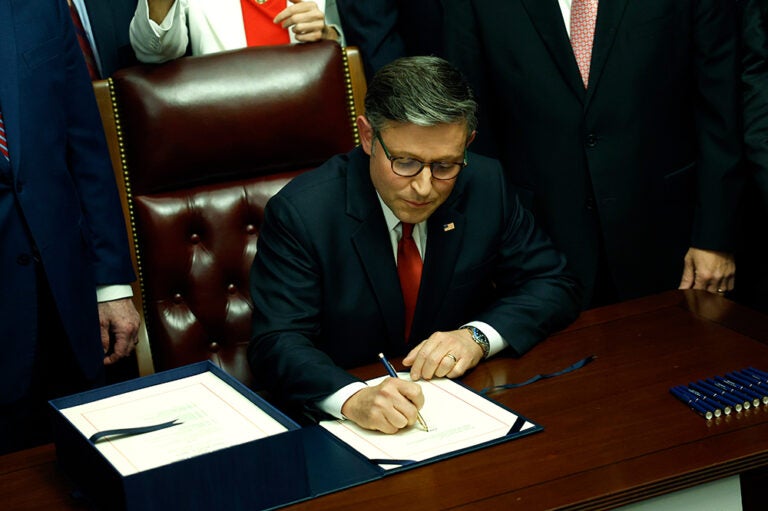The Inflation Reduction Act, which became law in August 2022, includes a provision that increased the budget for the Internal Revenue Service (IRS) by $80 billion over 10 years. While a small portion of that additional funding was rescinded through the Fiscal Responsibility Act of 2023, the Biden Administration and many other observers argue that increased funding for the IRS will enhance tax enforcement efforts, which would help narrow the tax gap — the nearly half a trillion dollar annual difference between the total amount of taxes owed and the amount actually collected. Here we examine that increase in funding in greater detail by analyzing the extent to which more funding impacts tax compliance, the tax gap, and federal revenues.
What Is the Current State of the IRS’s Enforcement Capabilities?
The IRS is responsible for processing hundreds of millions of returns submitted every year by taxpayers and for ensuring that noncompliant taxpayers or entities pay what is owed. A substantial portion of the IRS’s total annual budget goes toward enforcement activities such as investigations, exams and collections, and regulatory compliance. The remainder of the IRS’s budget goes to taxpayer services, operations support, and business system modernizations.
Despite its critical role in ensuring tax compliance, the IRS had faced funding cuts for many years. According to a report from the Congressional Budget Office (CBO), total appropriations for the IRS fell by 20 percent between 2010 and 2018 (the most recent year for which complete data was available), while the total number of employees at the agency fell by 22 percent over the same period. What’s more, the total number of employees dedicated to enforcement declined by 30 percent from 2010 to 2018, from about 50,000 to 35,000. At the same time, the total number of tax forms filed increased 9 percent to 250 million.
As the size of the IRS’s budget and workforce declined, so too did the agency’s ability to properly enforce tax compliance. For example, the audit coverage rate — which is the number of audits closed and in-process compared to the total number of returns filed in that tax year — fell by 66 percent between 2010 and 2018 (the most recent year for which complete data is available). The decline in the examination rates for both individual and corporate income taxes led to a considerable reduction in the total amount of additional taxes and penalties recommended by the IRS after audit, which in turn increases the total amount of unpaid tax debt and widened the tax gap.
What Is the Tax Gap?
Simply put, the tax gap is the difference between the total amount of federal taxes owed by taxpayers and the actual amount paid on or before the filing date. The IRS projected that the tax gap averaged $645 billion in 2020 and 2021. About 75 percent of that gap was owed in individual income taxes, while unpaid employment and corporate taxes accounted for roughly 15 percent and 10 percent, respectively. According to an analysis from the Congressional Research Service, the vast majority (80 percent) of the gross tax gap came from incorrect reporting, specifically underreporting income or over-reporting adjustments and credits. IRS enforcement activities between 2020 and 2021 were only able to reduce the individual income tax gap by $45 billion, the employment tax gap by $6 billion, and the corporate tax gap by $8 billion. As a result, the net tax gap (the amount of tax that remains unpaid after IRS enforcement activities or delayed payments are collected) averaged $582 billion.
How Can Increased Funding for the IRS Affect the Tax Gap?
Many policymakers argue that increasing funding for the IRS to bolster its enforcement capabilities would help narrow the tax gap. A report from the Congressional Research Service notes that the size of the IRS budget and staff affects the level of taxpayer compliance and taxpayer services conducted by the agency. Due to funding shortages, the number of revenue agents — who are responsible for administering the most complex enforcement cases — fell by 35 percent and officers by 48 percent between 2010 and 2018. Those reductions led to a decrease in audit rates. For example, between 2010 and 2018, the audit rate for individuals with incomes above $1 million dropped by 61 percent. It stands to reason that if funding and staffing shortages were addressed, the IRS’s ability to better enforce tax compliance would improve, and the tax gap would shrink, thereby improving our nation’s fiscal picture.
The Inflation Reduction Act allocated $80 billion in additional funds to the IRS from 2022 to 2031. While the increased funding would go towards a variety of IRS activities, 58 percent is directed towards enforcement activities, which would increase the agency’s ability to perform audits and collect taxes owed — decreasing the tax gap as a result. CBO estimated that the $80 billion in additional funding would have yielded $186 billion of additional revenues over the 2023–2032 period. However, lawmakers rescinded $1.4 billion of that funding with the enactment of the Fiscal Responsibility Act. CBO estimated the rescission of IRS funding will decrease revenues by $2.3 billion through 2033.
The IRS is expected to face difficulty hiring experienced revenue agents who have specialized areas of knowledge, which will result in a delay in additional tax revenues in the first few years after the increase in funding. Once the IRS is able to hire and train new agents, additional revenues are projected to grow substantially as a result of increased enforcement activity. Because the additional $80 billion in IRS funds is only available through 2031, a significant drop in annual additional federal revenues in projected in 2032.
Conclusion
The IRS has faced funding and staffing shortages for many years, resulting in less robust annual tax collections and a widening tax gap, which have raised questions about fairness and our fiscal outlook among many policymakers and citizens. Analysis from CBO concludes that providing additional funding and resources to the IRS to bolster its enforcement capabilities would have a positive effect on the accuracy of the collection of taxes owed as defined under existing law and subsequently on federal revenues, the tax gap, and the deficit.
Image credit: Photo by mj0007/Getty Images
Further Reading
How Did the One Big Beautiful Bill Act Change Tax Policy?
See how OBBBA restructured the tax landscape across four major areas: individual tax provisions, business tax provisions, energy tax credits, and health-related tax changes.
Should We Eliminate the Social Security Tax Cap?
There have been a number of proposals to increase, eliminate, or otherwise adjust the payroll tax cap as a way to shore up Social Security’s finances.
No Taxes on Tips Will Drive Deficits Higher
Here’s how this new, temporary deduction will affect federal revenues, budget deficits, and tax equity.


